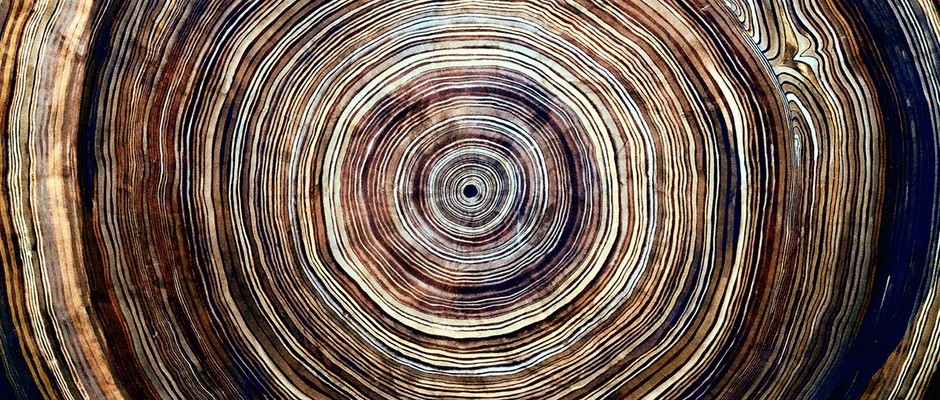
Climate CSI: How counting tree rings can unlock environmental mysteries
At its core, dendrochronology is the science of using tree rings to date and analyse events in the past. But how does it work? Here's a closer look at this fascinating process.
Dendrochronology is a technique that involves calculating the age of a tree, or a piece of wood, by counting growth rings. As well as growing upwards, trees grow outwards each year by adding new woody tissue just underneath the bark, in an area known as the vascular cambium.
In the spring, trees produce large, thin-walled cells under the bark, but as growth slows towards the end of the summer, they add denser, thicker-walled ‘latewood’ cells that appear darker in colour, leaving visible rings in the trunk that mark each year of growth.

Dendrochronology has a wide range of applications, including dating archaeological remains and calibrating radiocarbon dating. As the width of each ring depends on how much new tissue was added during the growth season, which is influenced by the climate and environmental conditions that year, tree rings can reveal information about past climatic changes. However, like all techniques, dendrochronology has limitations.
First, it requires a full cross-section of a tree, right up to the bark, which is not always present in trimmed timber samples. Additionally, damage to the tree (such as removing the bark) can deform tree rings as the plant grows over the scar.
Some trees can be more reliably dated than others. Oak trees, for example, reliably produce a single ring each year, whereas alder, pine and birch have more erratic growth cycles and may skip a ring in some years, or double up in others.
Read more:
- Do trees in rainforests have seasonal growth rings?
- How do you estimate the height of a tree?
- What makes hardwood hard and softwood soft?
- Why have trees evolved such a variety of leaf shapes?
Asked by: Helen Stevenson, via email
To submit your questions email us at questions@sciencefocus.com (don't forget to include your name and location)
Authors
Dr Claire Asher is a science journalist and has a PhD in Genetics, Ecology, and Evolution (GEE) at the University of Leeds. She also works part time as Manager of the UK Robotics and Autonomous Systems (RAS) Network, based at Imperial College London. Asher is also the author of Brave Green World: How Science Can Save Our Planet.
Sponsored Deals

May Half Price Sale
- Save up to 52% when you subscribe to BBC Science Focus Magazine.
- Risk - free offer! Cancel at any time when you subscribe via Direct Debit.
- FREE UK delivery.
- Stay up to date with the latest developments in the worlds of science and technology.





